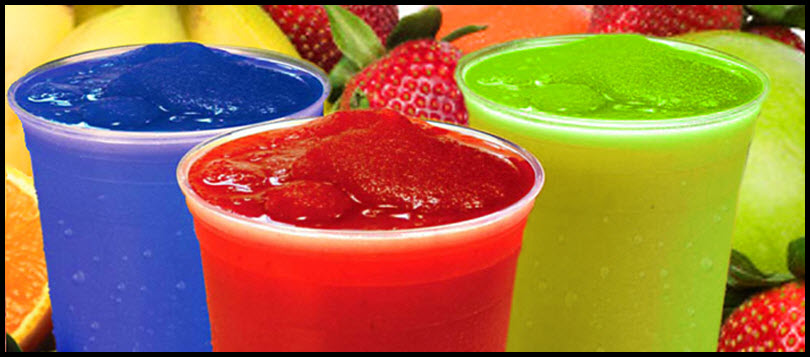
Did you know that many studies show exercise performance is impaired in hot, humid conditions?
Yes! People spend time and money on researching and writing about the fact that when it’s hot, you can’t run as fast or as far.
And lucky for us they do, because turns out there are a few things you can do to delay the onset of this heat induced fatigue.
Pre-cooling your body for running in hot weather
Pre-cooling your body before bouts of endurance exercise in hot humid conditions (around 32 + degrees Celsius, 60%+ humidity) can see big improvements in performance. I’m not saying pre-cooling will see you running faster in hot weather than you would in 15-degree temperatures, but you’ll run faster than you otherwise would have if you didn’t pre-cool. It’s particularly important too pre-cool when you are running in humidity, as it’s much harder to cool down in humid conditions.
One pre-cooling study showed that by pre-cooling before running in hot conditions, athletes were able to run an average of 304m further on a 30 minute treadmill run. Pre-cooled athletes not only ran at higher speeds throughout the 30 minutes, but they were also able to finish stronger than the control group.
Looking at that another way, if you ran a 5k race against a friend, and you both had the ability to run 5ks in extreme heat in 30 minutes, you could finish 300 metres in front of them, just by pre-cooling your body! Not only that, you’d do so in spectacular fashion, pulling away from them towards the end, (to the cheers of the assembled crowd, no doubt !!)
How does pre-cooling help with hot weather running?
Good question, and one that can’t be answered with much certainty at this stage.
It’s thought that pre-cooling increases the body’s heat storage capacity, delaying fatigue. The increased heat storage capacity means you can complete a greater amount of work before your body gets too hot. Just how hot “too hot” is, has not been established. Also, just why your body can store more heat is not clear.
The results of many studies suggest muscle recruitment by the central nervous system plays a part in this improved performance.
The main function of our brains is to keep our bodies alive. When the brain detects something going on that might be harmful to us, it tries to stop this from happening. If the brain can detect that we are overheating, it’ll do everything in its power to stop that from happening. It will start to shut down the recruitment of muscle fibres, so you literally have less muscle at your disposal to do the work. This makes you slow down and stops your core temperature from escalating. It also makes it hurt more.
One study of cyclists had pre-cooled and control groups perform a 40 minute time trial. The pre-cooled athletes immersed their lower body in water for 20 mins prior to the time trial. Cycling performance of the pre-cooled group was superior to the control group. Interestingly, core temperature, and muscle, skin and mean body temperatures were lowered in the pre-cooled athletes until the 20th minute of the time trail. However, performance between the two groups didn’t differ until the last 10 minutes of the time trial.
There was little difference in the level of intensity selected by pre-cooled and control subjects at the start of the time trial. So the pre-cooled dudes didn’t come out of the gates all guns blazing. They chose a level of exertion similar to that of the control group, but they were able to maintain that level for longer. The performance differences were a result in a drop off in performance of the control group, not an increase in performance over the last 10 minutes from the pre-cooled group.
And that is the key to doing well in endurance sports. Maintaining performance over a sustained period.
How do I get my hands on this pre-cooling stuff?
That gets a bit trickier. There are a few methods for pre-cooling, not all of them simple. You need to pre-cool for quite a while. Most research has been done when subjects have been pre-cooled for extensive periods of time. From 20-60 minutes submerged in water or exposed to 5-degree C air, following set protocols. (No-it’s not as simple as jumping in the local butcher’s cool room for an hour before you go for a run)!
Pre-cool using slushies
Clearly, most of us don’t have the facilities, nor the time, to pre-cool using high-tech methods. But there is hope. One study on the use of ice slurries vs cold water ingestion prior to exercise showed that subjects who ingested an ice slurry ran on average 8.5 mins further to exhaustion than those who pre-cooled with cold water.
Subjects’ rating of perceived exertion was also lower throughout the exercise bout in the slushie group. They felt the whole thing was easier (and that’s got to be a good thing, right?)
The cold water group had a lower rectal temperature (eeuwk) than the ice eaters. This led the researchers to conclude the likely cause of the higher performance was due to a reduction in brain temperature (as the pre-cooling happened through the mouth, which is of course, close to the brain).
Careful of Sphenopalatine Ganglioneuralgia
One of the downsides of slopping down a slushie is the chance of brain freeze. 30% of the subjects in the study suffered from this. Not surprising. The amount of slushie they had to get down in 30 minutes prior to exercise was not insubstantial.
Here’s the slushie exercise pre-cooling protocol
- For every kg of body weight, consume 7.5gms of slushy. This should be consumed in the 25 minutes prior to 5 mins before exercise. Start slurping 30 mins before exercise and finish 5 mins before you start to run.
- Take the slushie in at an even rate – 1.5 gms of slushie for each kg of body weight every 5 minutes.
- This seems like quite a lot of slushie to slurp – around half a litre for a 60gk person, so it’s not something you’d want to try before a race without lots of practice in training.
- Apart from brain freeze, another downside is the caloric value of slushies. The study used a 5% carbohydrate/water mix for their ice slurry. 500gms of slurry would be 25 grams of carbohydrate, or approximately 100 calories. Not sure what the caloric value of a slushie from your local servo is, but you can bet your bottom dollar it’s at least equal to that.
- You can of course just crush plain ice if you want to avoid the sugar.
Ice Blocks instead of slushies?
I’m guessing that a lemonade Icey Pole (or 6) would also do the trick. Icey Poles are around 75 gms each, so you’d need to munch through around 6 in 25 minutes to cool yourself. That is total brain freeze territory.
What else can you do to make running in hot weather easier?
- Pour water over your head, a lot during exercise. One study, showed that head cooling during exercise in hot conditions increased cycling time to exhaustion by a whopping 51%. The researchers felt the increase in performance was probably due to the lower brain temperatures.
- Use a neck cooler whilst you’re running. Those things that are made of fabric and have some kind of crystal-type stuff inside them which you can wet, then tie around your neck.
- Add to your pre-cooling strategy by putting icepacks on your neck and between your thighs whilst slurping your slushie.
- See some more strategies for running on hot weather
Pre-cooling is not just important for hot weather racing
Pre-cooling can also be a very useful tool in training. Up to an injury free point, the more you run, the better you’ll be at it. For most people who want to get faster over any distance from 3k to the marathon and beyond, they need to get more running under their belts. If you can pre-cool yourself in training, you’ll be able to run further. Not only that, it might make the whole experience of running in our ever increasing temperatures a whole lot more pleasant – which means next run, you’re far less likely to want to pack it in even before you start.
One last note – sprint racing
The evidence shows that pre-cooling definitely works for distance events. It seems to work for events such as soccer matches with shorter bursts of faster running over a long period of time, though there has not been as much research done in this area.
There is definitive evidence that it is detrimental for shorter distance running -such as 100m sprints. With school sports carnivals coming up soon, it’s best to leave the slushies, Icey poles and Sunnyboys till after the event. Kids should stay in the shade and keep reasonably cool, but bringing their core temperature down dramatically won’t see them become the next school 100m record holder.
References:
Olympics in Atlanta: a fight against physics
Effects of warm-up and precooling on endurance performance in the heat
Cooling Athletes before Competition in the Heat
Ice Slurry Ingestion Increases Core Temperature Capacity and Running Time in the Heat
Volume-dependent response of precooling for intermittent-sprint exercise in the heat
Effects of warm-up and precooling on endurance performance in the heat


